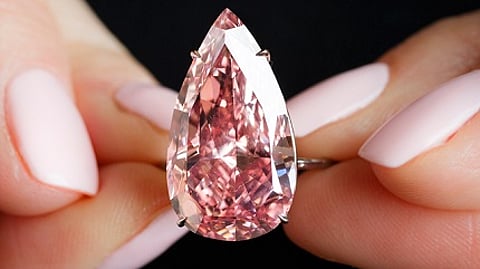

Increasing prices of FCDs
When chemical elements such as Boron or Nitrogen are trapped during the process of a diamond formation, coloured diamonds are formed. Only 1 carat of coloured diamond is found in a total of 10000 mined diamonds and when these are further scrutinized for “intense” colour grading, a measly one carat may be found in a total of 25,000 diamonds. So it is this rarity factor that makes these FCDs inestimable. In 2008, when the economy took a heavy beating, investors were looking at alternatives or tangible forms of investments rather than stocks and shares. The wealthiest 1 per cent began investing in wines, paintings, precious metals and gemstones. According to Fancy Color Research Foundation, as of September 30, 2016, pink diamonds price has increased by 180 per cent, the highest thus far, followed by blue and yellow diamonds which are up by 70 per cent and 90 per cent respectively. Market fluctuations have no effect on FCDs. They are long term assets which have proven to fetch great ROI – any investor who has made his bid over a FCD will tell you that it is now worth multiple times its original price.
We have witnessed auction prices like never before in the last few years. 2015 May, a 14.62 blue diamond was auctioned at $57.5 million and in November the same year, the elusive 12.03 carat Blue Moon was sold $50 million. It was the only diamond that was sold at $4 million per carat. The Pink Star has joined this league of extraordinary coloured diamonds, breaking all records in total value.
With coloured diamonds, colour trumps other factors such as clarity and cut. Brown diamonds are the most common coloured diamonds. The more intense the brown, the higher the price. Once only used for industrial purposes, these diamonds were so smartly packaged as “Champagne”, “Cognac” and “Chocolate” these diamonds are worth thousands of dollars per carat today. This is followed by yellow diamonds also known as Canary diamonds – these diamonds are available in the market and come in large sizes up to 10 carats. Green, blue, orange, purple, violet, red and pink are the rarest (not in the same order), with red being the rarest of rare. While lighter shades of yellow, pink and blue diamonds in large sizes are in great demand, according to reports, combination colours like pinkish-purple or yellowish-brown is hot selling nowadays.
Rock solid investment
While coloured diamonds are in great demand, the market is not so transparent. Very few fancy coloured diamonds are auctioned at famous auction houses and most of them are sold privately. This doesn’t give too much of a window for investors to study the prices. Also, the supply is not as prolific as colourless diamonds. Rio Tinto’s Argyle produces about 90% of these coloured diamonds and the ambiguity surrounding the mine’s future, have made these diamonds even more priceless.
Follow DiamondWorld on Instagram: @diamondworldnet
Follow DiamondWorld on Twitter: @diamondworldnet
Follow DiamondWorld on Facebook: @diamondworldnet
